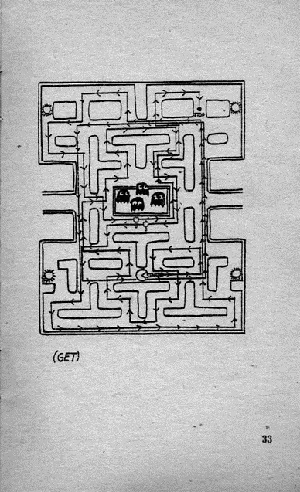
You want to talk about throwbacks to an earlier era? Let's march through history and take a look at one of the grandfathers of the modern-day, full-color, tome-sized books we call strategy guides.
Back in 1982, arcades were in full swing. The very idea of a 'video game crash' was impossible to conceive: Asteroids in a single year pulled in nearly $800 million worth of quarters, enough to eclipse Gone With the Wind's forty year run as the highest-grossing film in cinematic history. Space Invaders was displacing Baseball as a national pastime. Defender menaced Sheena Easton. It was madness!
Then came Pac-Man, and the world would never be the same.
Pac-Man, with its simple single joystick control scheme and maze-navigation gameplay, captured the attention of everybody: child or senior citizen, man or woman, teenagers on the weekend or office workers on their lunch breaks, nobody, not even Buckner and Garcia, was immune to Pac-Man Fever.
Into this crazy world of electronic entertainment came Craig Kubey, a 32-year old lawyer turned game master at the behest of two of his siblings. That's right: before Jeff Rovin and his sons started winning at Nintendo, Craig and his brother were Scoring Big at Pac-Man.
To Guide or Not to Guide?
At 48 pages, the size of a pocket paperback, and with a cover price of $1.25 (though it costs significantly more these days), calling Scoring Big at Pac-Man a "guide" seems, uh, generous, but "To Pamphlet or Not to Pamphlet" lacks the same oomph, so here we are.
It's a simple book, but at its core are strategies not only unseen at the time, but largely forgotten today. Three friends calling themselves the GET Brothers (their first names are George, Ed, and Tom) developed their own patterns for play. Author Kubey tracked these guys down in their home town of Davis, California, interviewed them, learned their patterns, then sketched them out to get them into the book:

Screenshots? We don't need no stinkin' screenshots...
But the arcade's only part of the story. By this time, Pac-Man was available on the Atari VCS and while Kubey doesn't offer up any patterns for victory (not surprising, since there aren't any that work with 100% reliability), he does explain the main differences between the arcade machine and its home-based counterpart. Remember, this is 1982 we're talking about: no internet, no YouTube demonstration videos, no GameFAQs. If you wanted to get better at Pac-Man (or any game, really) you had to either find friends who were better and could teach you, or you brute forced you way to the top of the high score charts through unrelenting practice. This was Kubey's attempt to 'cut out the middle man' and give players a starting point, something to aim for, with something small enough to be carried in one's back pocket or purse.
That's pretty damn awesome, if I say so myself. Thanks to the rise of emulation and classic gaming as a whole, the patterns developed by the GET Brothers and documented here by Kubey are still effective and worth learning, especially if you're interested in competitive play.
Despite its lack of screenshots, this book actually goes beyond what we think of as a 'strategy guide' today. Because of that, I'd say it belongs in any serious gaming historian's library, and if you get the opportunity to browse through it, you can literally feel the 80's nostalgia wafting off the pages.
Sticky floors, caramel corn, and cigarette smoke not included.